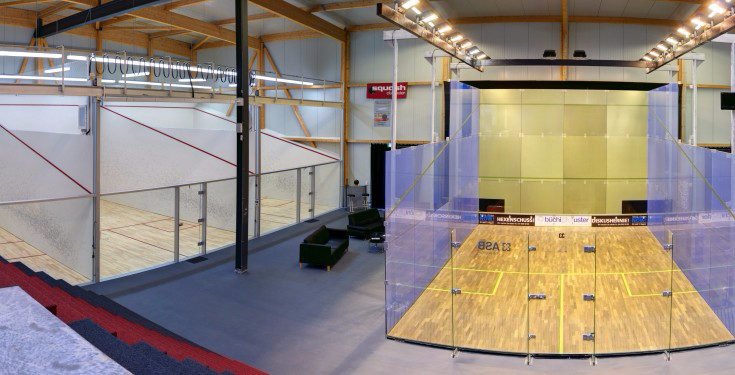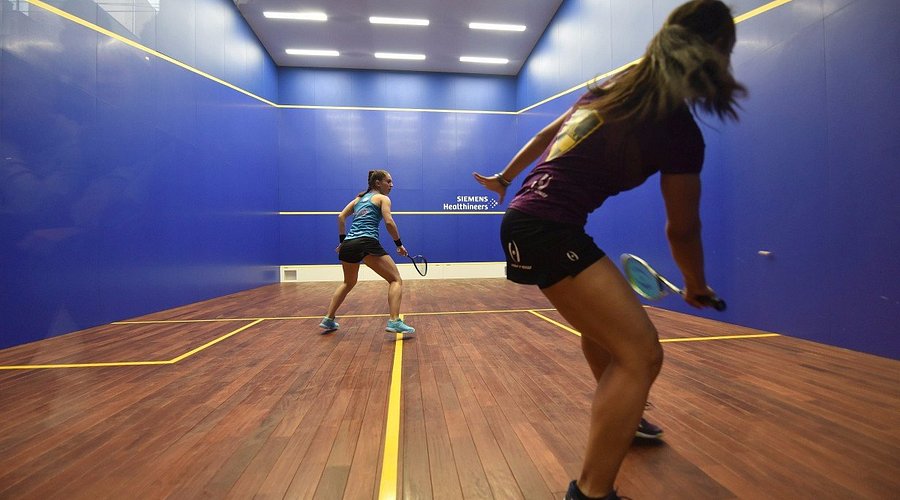Squash is one of the most thrilling and high-paced racquet sports out there. Played within four walls, the squash court game challenges both your physical endurance and mental agility. Whether you’re new to the sport or looking to sharpen your skills, this ultimate guide will walk you through everything you need to know about mastering squash — from understanding the court to improving your gameplay.
What is a Squash Court Game?
A squash court game is a fast-paced indoor sport played by two (singles) or four (doubles) players using racquets and a small rubber ball. The game takes place in a four-walled court where players alternately hit the ball against the front wall within designated boundaries. The objective? To make it difficult for your opponent to return the ball before it bounces twice.
Squash originated in England in the 19th century and has since become a global sport played for fun, fitness, and competition. Unlike tennis, where the court is open, squash uses the walls strategically, making gameplay more dynamic and intense.
Squash Court Layout & Dimensions

Table of Contents
To master squash, you must first understand the battlefield — the squash court.
- Dimensions: A standard squash court is 32 feet (9.75 meters) long and 21 feet (6.4 meters) wide for singles. For doubles, it’s wider — 25 feet (7.62 meters).
- Front Wall: The main wall where most shots are aimed. It has a service line and a tin at the bottom (which acts like a net).
- Service Boxes: Two small squares on each side of the court from where players serve.
- Out-of-Bounds Lines: Markings on all four walls indicating playable areas.
- The T Zone: Center of the court — crucial for positioning and controlling the game.
Understanding these elements helps you navigate the court better and plan your moves more strategically.
Essential Rules of the Game
Squash is governed by clear and concise rules that make it accessible yet competitive.
- Serving: The server must stand in a service box and hit the ball to the opposite quarter of the court. The ball must strike above the service line on the front wall.
- Rallies: After the serve, players alternate hitting the ball before it bounces twice. Shots can strike any wall but must hit the front wall before the floor.
- Scoring: Modern squash uses rally scoring — whoever wins the rally scores a point. Games are played to 11 points, and matches typically follow the best of five format.
- Let and Stroke: These are decisions made by referees when there’s interference or safety issues. A “let” is a replay; a “stroke” awards the point.
Types of Squash Games
There’s more than one way to enjoy the squash court game:
- Singles: The most common format — fast, strategic, and intense.
- Doubles: Played with four players on a wider court; more about teamwork and positioning.
- Recreational: Friendly games with relaxed rules, perfect for beginners.
- Competitive/Professional: High-intensity matches under official rules.
Squash is also played worldwide with slight regional variations, but the core remains consistent.
Equipment Needed for a Squash Court Game
You don’t need a ton of gear to get started, but having the right equipment can elevate your game.
1. Racket
Lightweight and durable, squash rackets are designed for fast swings and precision control.
2. Ball
Squash balls vary by bounce and speed. Beginners should start with balls that have more bounce (blue or red dots), while professionals use slower balls (yellow dot).
3. Shoes
Non-marking indoor shoes with good grip and lateral support are a must.
4. Apparel
Light, breathable clothing allows full mobility and keeps you cool during gameplay.
5. Optional Accessories
Protective eyewear, wristbands, and squash bags are helpful but not essential for beginners.
Health and Fitness Benefits of Squash
The squash court game offers an excellent full-body workout, improving both your physical and mental health.
- Cardio Boost: Squash is a high-intensity workout, helping improve cardiovascular endurance.
- Muscle Tone: Repeated lunges, quick direction changes, and arm swings strengthen legs, arms, and core.
- Weight Loss: A single session can burn 600-1000 calories depending on intensity.
- Mental Agility: The game demands sharp reflexes, focus, and strategic thinking.
- Stress Relief: It’s an intense yet fun way to blow off steam.
Playing squash regularly can keep you fit, agile, and mentally sharp.
How to Start Playing Squash
New to squash? Here’s how to dive in:
1. Find a Court
Check out local gyms, sports complexes, or racquet clubs. Many offer squash courts by the hour.
2. Get the Right Gear
Start with a basic racket, beginner ball, and suitable shoes. No need to splurge in the beginning.
3. Learn the Basics
Consider taking a lesson or watching instructional videos to understand technique and rules.
4. Practice with a Friend
Find someone at your skill level to play with regularly.
For more beginner-friendly tips, gear guides, and other racket sports, visit Easy Sports Guide.
Beginner Tips to Improve Your Game
Mastering squash takes time, but these beginner tips will accelerate your progress:
✅ Focus on Footwork
Stay light on your feet. Quick movement and proper positioning are key.
✅ Control the T Zone
Try to return to the center (T zone) after each shot to stay in control.
✅ Use the Walls
Learn how to angle shots off the side walls to create tough returns for your opponent.
✅ Practice Serve & Return
A good serve can give you the upper hand. Work on accuracy and variation.
✅ Watch the Pros
Study professional matches to understand strategy, shot selection, and positioning.
✅ Stay Consistent
Rather than smashing the ball, aim for consistent and accurate shots.
✅ Warm-Up and Cool Down
Stretch before and after your games to avoid injuries and recover faster.
Conclusion
The squash court game is more than just a workout — it’s an exhilarating blend of strategy, speed, and skill. Whether you’re looking to get fit, take on a new challenge, or simply enjoy a dynamic indoor sport, squash delivers on all fronts. From understanding the court to improving your game, you now have the foundation to start your squash journey.
Looking for more tips and guides to level up your sports game? Explore Easy Sports Guide for beginner-friendly content on squash and beyond.

